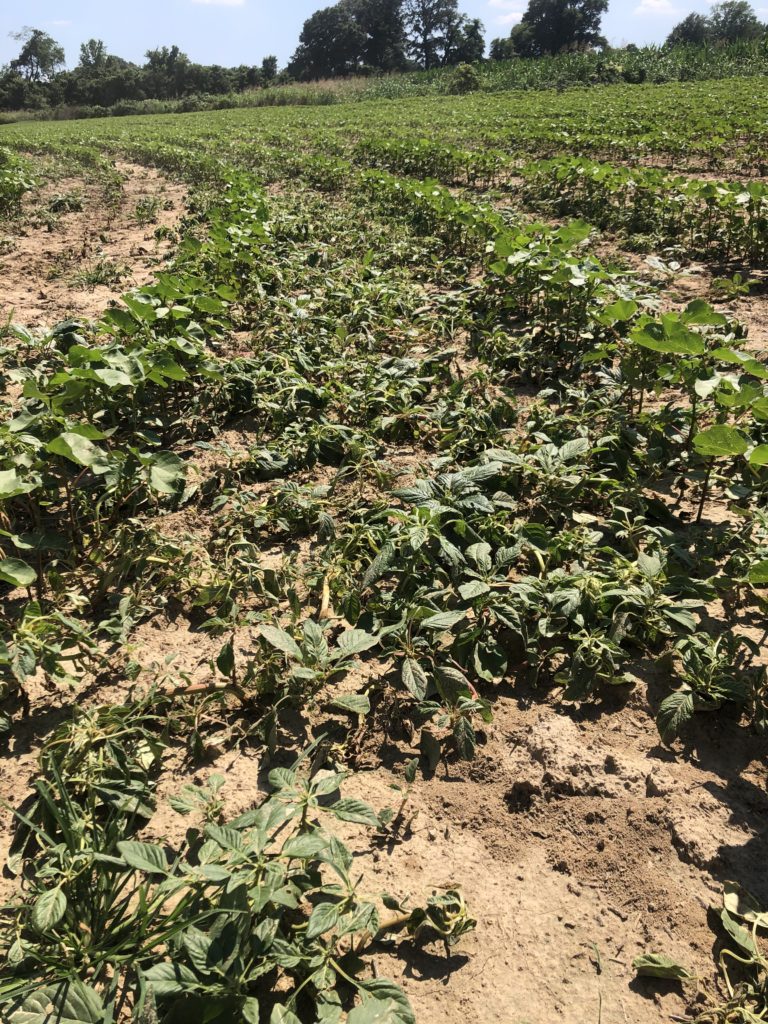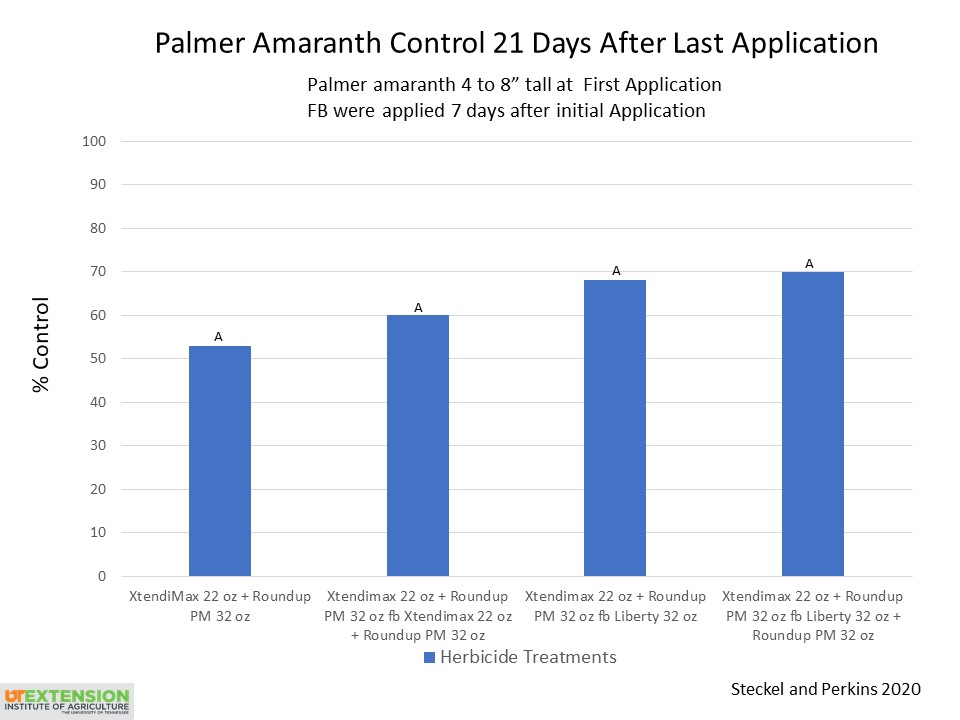
Calls continue to come in on concerns about poor Palmer amaranth control after a dicamba application. More than a few have reported that Palmer amaranth has survived multiple dicamba + glyphosate applications (Example above). In visiting with farmers, consultants and retailers it is interesting to note that some are seeing relatively good Palmer control with dicamba. Others, not so much, with the most concern coming from Crockett, Gibson and Madison counties. What appears to be ongoing is a segregating population of Palmer amaranth with the more auxin-herbicide tolerant biotypes becoming more numerous in a number of locations.
Several of our research studies this spring at Jackson, Milan and in Gibson county have also seen poor Palmer control with dicamba. In one recent study Palmer amaranth that was 2 to 5” at the time of a 0.5 lb/A dicamba + 32 oz/A glyphosate application resulted in control less than 60% by 21 days after application. Higher rates of dicamba were only marginally better (Figure 1).
In a separate study Palmer amaranth that was sprayed with glyphosate + dicamba when it was in the 4 to 8” range at time of first application resulted in 53% control (Figure 2). A follow-up application of dicamba + glyphosate applied 7 days after the initial application did not substantially improve control. In fact, no follow-up application improved control to an acceptable level.
So what should we do? Allowing the Palmer to recover for only 3 days instead of 7 may have helped control with the follow up Liberty performance. We have seen where 4 ozs of Anthem Max applied 3 days after an dicamba + glyphosate application improved control of the Palmer escapes to better than 80% in one study. I would expect a similar if not better result from Liberty if used with that tight a turn around.
These data illustrate the importance of using residual products and to start clean for best pigweed control. This has been the best year in recent memory for the performance of residual herbicides on Palmer. We will need to rely on them even more in 2021. Don’t forget to use post-directed or hooded applications in cotton. Some post-direct options are mentioned here POST-Direct and Hooded Applications .




You told us over and over during winter meeting season about the danger of mixing dicamba + glyphosate.
It surprises me consultants still recommend this and farmers still do it.
Thank you for your tireless work in this critical area of weed management.
Thanks Richard!
How did Prefix or Flexstar GT look post Dicamba application?
Have not looked at fomesafen following dicamba and glyphosate. Since Anthem Max has a PPO-inhibiting herbicide in it would suggest that fomsafen would help some.